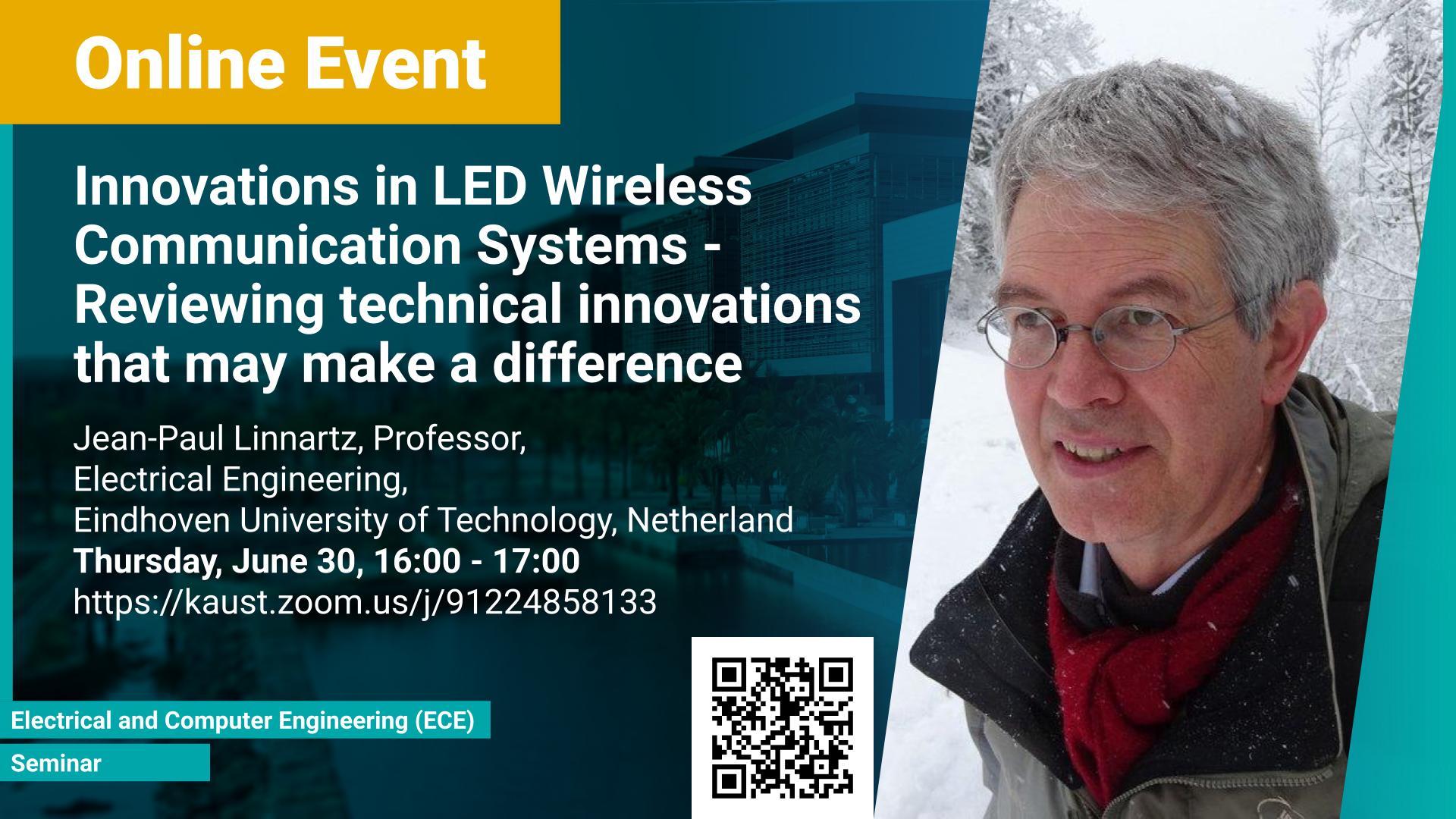Abstract
With the transition from traditional to LED light sources, the lighting industry has changed completely. Lighting systems have become intelligent and connected. The lighting network is one of the largest IoT infrastructures available today. With this transition, the role of the (light-) point in the ceiling also changes. We may in future see “Fibre-to-the-Bulb”. In fact, the ceiling point indoors or the street pole outdoors may act as sensing and communications hot spot. This fits very well with the demand for more connectivity: faster, lower latency, less prone to interference and congestion and more secure. Optical Wireless Communication is well positioned for this.
In this talk, Jean-Paul reviews a number of OWC and LiFI research themes, discusses their (ir-)relevance for practical systems, and he will give a number of examples how practical questions gave inspiration for research in his team.
While pushing up the bit rate is a major theme in academic work, the value in the indoor market is not necessarily in higher (bit/s) speeds, but rather in increased user density (bit/s/m2). Most of the reported problems with radio-based connectivity stem from congestion due to mutual interference. OWC allows beam steering in a more natural way then in RF. Nonetheless, spatial interference management is relevant to fully capture the promises of OWC.
In industry 4.0, one of the most prominent security advantages of OWC may be that it is harder to intentionally interfere with the system in DOS attacks. Yet, if reliability is a selling feature, protection against accidental interruption of the beam also becomes critical. Spatially distributed MIMO with angular separation at the receiver can dramatically improve robustness, similar to the 100 years+ of experience that the lighting industry has with uniform, shadow-free illumination. The EU ELIoT project addresses this topic.
While the radio community heavily relies on detailed channel models, the modelling of the response photonic components is far less mature. While solutions that fit radio well (e.g. OFDM) are heavily reused in OWC, the scientific optimization of the modulation method to the dynamic non-linear response of the LED may deserve more attention. In fact, with his team at Eindhoven University of Technology this led to interesting new insights and improvements.
Brief Biography
Jean-Paul Linnartz obtained his MSc in Electrical Engineering from Eindhoven University of Technology (TU/e) in 1986. After a year of working on Radio Propagationat TNO, he did his PhD at Delft University of Technology, graduating in 1991 on traffic analysis in Wireless Networks. As Assistant Professor at the University of California at Berkeley, he worked on autonomous driving and wireless multimedia (Infopad). After being appointed as Associate Professor at Delft University of Technologyin 1995, Linnartz joined Philips Research, becoming Senior Director in 2002 and Research Fellow in 2007. Currently,
he is with Signify (Philips Lighting). In 2006, he returned to TU/e as Professor, initially in Cognitive Radio and currently in Signal Processing.

